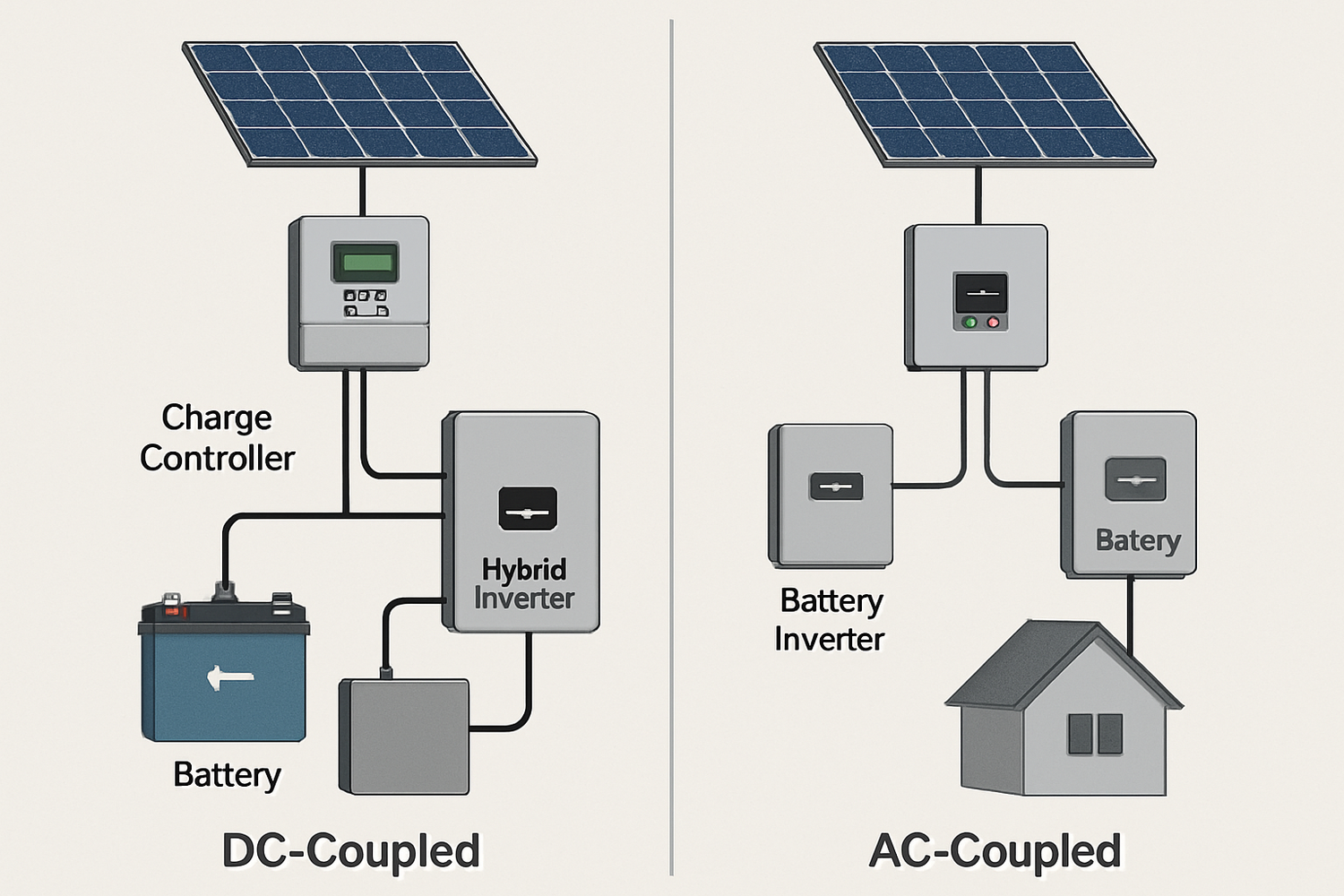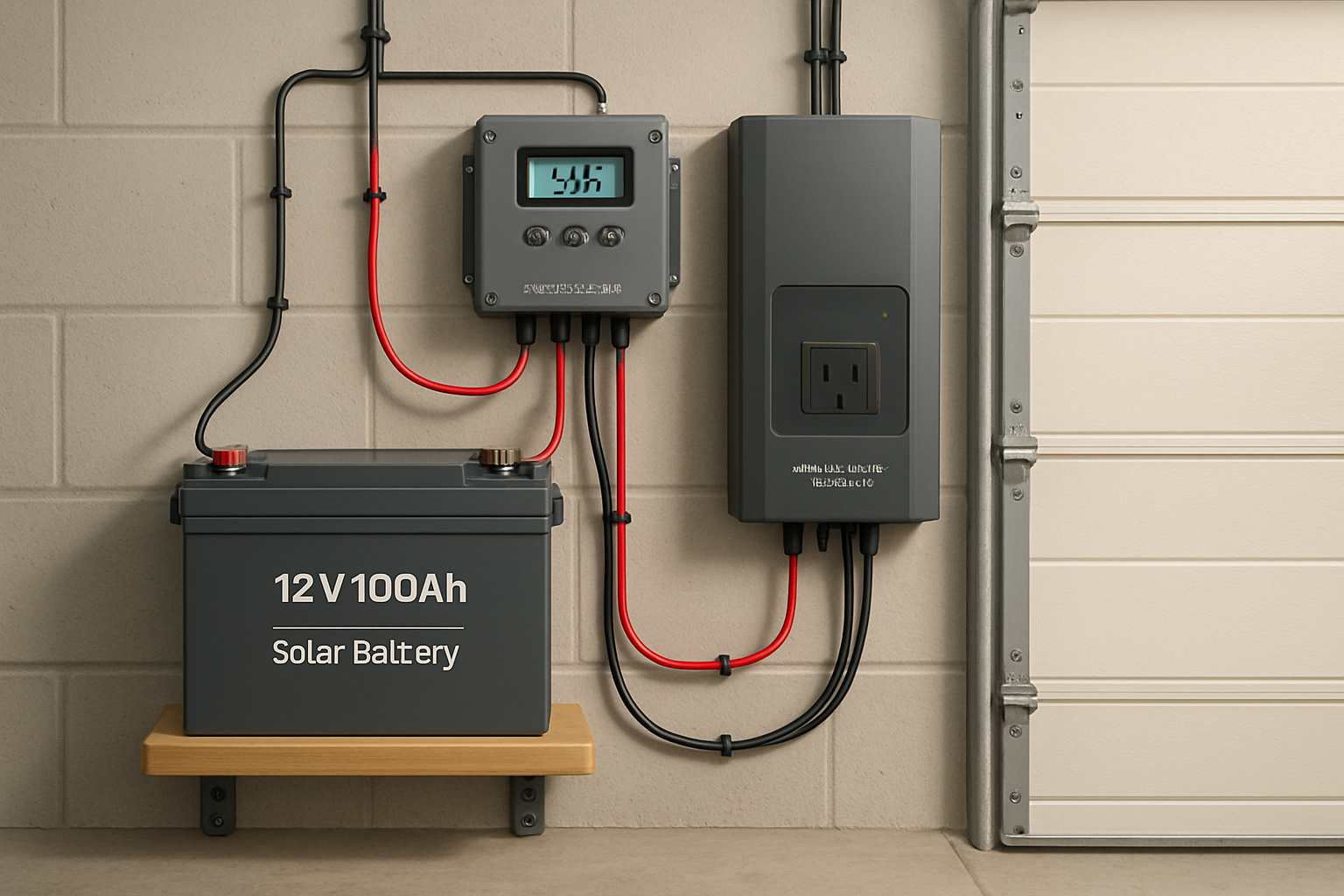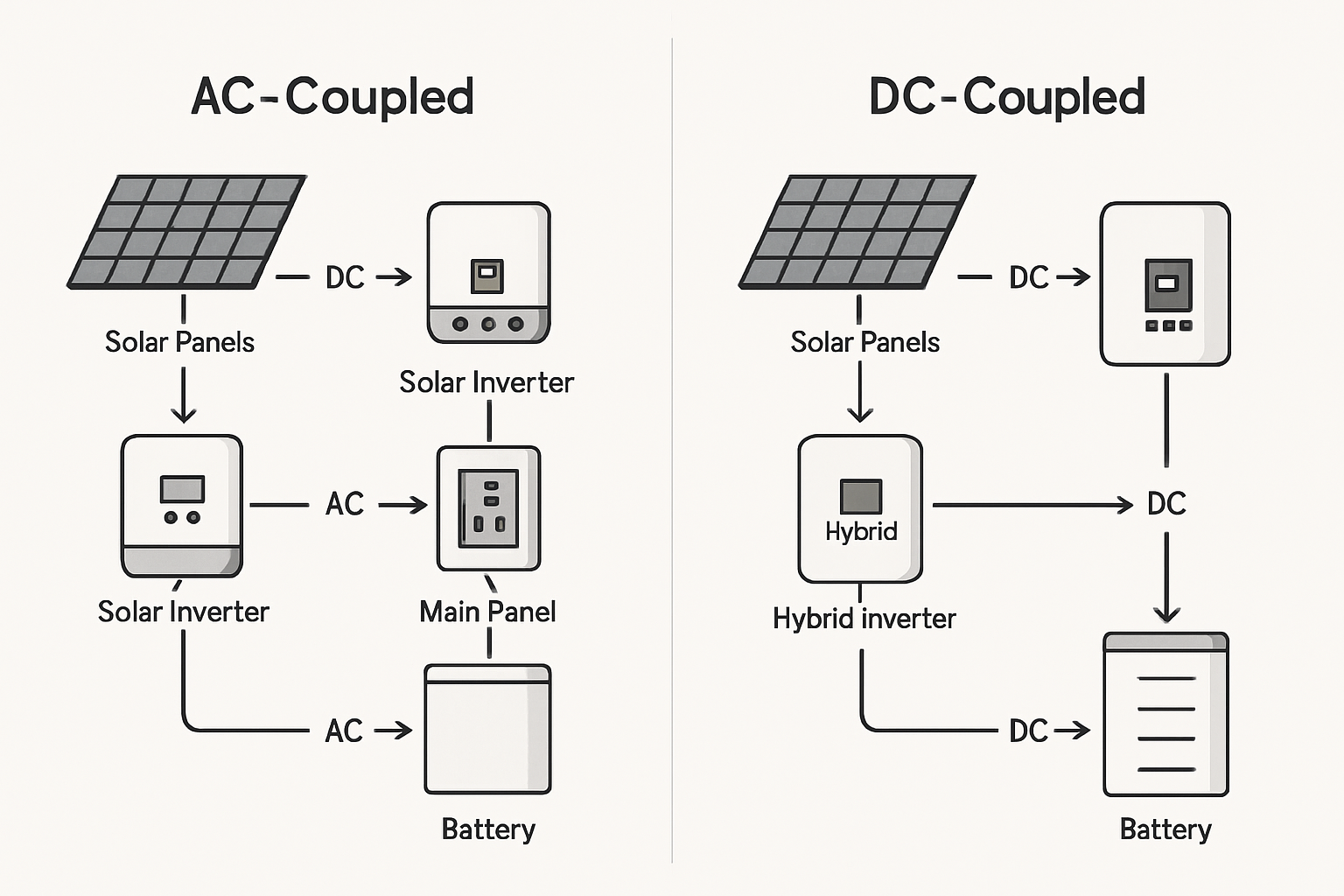Harnessing solar power gives you access to clean, renewable energy. But what happens when the sun sets or clouds roll in? This is where energy storage integration becomes crucial. By pairing solar panels with a battery system, you create a self-sufficient and reliable power source, available 24/7. This combination transforms a simple solar panel setup into a comprehensive energy solution.
This text explains the fundamentals of integrating a battery with your PV system. We will cover the core components, the different ways to connect them, and the practical steps for designing a system that meets your energy needs. The goal is to provide a clear path to understanding and implementing a solar power with battery backup system, putting you in control of your energy future.
Why Pair Solar Panels with Battery Storage?
The synergy between solar panels and battery storage unlocks several powerful advantages. It moves beyond simply generating power to intelligently managing and storing it for when you need it most. This strategic pairing is the key to true energy resilience.
Achieving Energy Independence
A primary motivation for adding battery storage is to reduce reliance on the utility grid. With a battery, you can store the excess solar energy your panels produce during the day instead of sending it all back to the grid. This stored power can then be used to run your home at night, during peak-rate hours, or even during a power outage. For those in remote locations, a well-designed PV system with battery backup can provide complete freedom from the grid. Our expertise in off-grid solar solutions helps power homes, farms, and cabins, delivering reliable energy no matter the location. True energy independence is about having power on your own terms. For more details, you can read about how to Unlock Energy Independence with a 12V 100Ah Solar Battery.
Maximizing Self-Consumption and Savings
Without storage, a significant portion of the solar energy you generate might be exported to the grid, often for minimal credit. A battery allows you to keep that energy for your own use, a concept known as "self-consumption." By using your own stored solar power in the evenings, you purchase far less electricity from the utility. In areas with Time-of-Use (TOU) electricity rates, this strategy is even more effective. You can charge your battery with free solar energy during off-peak hours and discharge it during expensive peak hours, directly reducing your electricity bills. This raises an important question for many homeowners: Is a Home Solar Battery Storage System Worth the Price?
Ensuring Power Reliability and Backup
Grid instability and weather-related outages are becoming more common. A solar and storage system provides a clean, quiet, and automatic backup power source. Unlike a traditional generator, it requires no fuel and produces no emissions. When the grid goes down, a properly configured system can seamlessly switch over to battery power, keeping your essential appliances—like refrigerators, lights, and medical devices—running without interruption. According to the International Energy Agency (IEA), electricity storage technologies are a valuable resource for addressing the system impacts of variable renewable energy sources like solar, thereby enhancing overall grid stability.
The Core Components of an Integrated PV System
A successful energy storage integration relies on several key components working together in harmony. Understanding the role of each part is the first step in designing a robust and efficient system.
Solar Panels (The Generator)
The solar panels, or photovoltaic (PV) modules, are the foundation of your system. They capture sunlight and convert it into direct current (DC) electricity through the photovoltaic effect. The amount of power they produce depends on factors like their efficiency, wattage, orientation, and the amount of sunlight they receive.
The Battery (The Reservoir)
The battery is where you store the DC energy generated by your panels. Modern systems increasingly rely on Lithium Iron Phosphate (LiFePO4) batteries due to their superior safety, long lifespan, and excellent thermal stability. Unlike other lithium-ion chemistries, LiFePO4 is less prone to thermal runaway, making it a reliable choice for home energy storage. These batteries can also be discharged more deeply without damaging their health, giving you more usable energy. There are many misconceptions about solar batteries, but the data supports the LiFePO4 advantage. You can explore this further in Solar Battery Myths vs. Reality: The LiFePO4 Advantage and compare options in Choosing Your Power: LiFePO4 vs. Li-Ion Solar Batteries. The specific 7 Key Benefits of a 12V LiFePO4 Battery for Home Solar highlight why this technology is a leading choice.
The Inverter (The Brains)
The inverter is the central manager of your system. Its primary job is to convert the DC electricity from your solar panels and battery into alternating current (AC) electricity that your home appliances can use. In an integrated system, a hybrid inverter is often used. This advanced device can intelligently direct the flow of energy between the solar panels, the battery, the home, and the grid, all from a single unit.
How It All Connects: AC vs. DC Coupling
Connecting a battery to a solar panel array can be done in two primary ways: AC coupling or DC coupling. The term "coupling" refers to the point at which the battery is integrated into the PV system's electrical architecture. Each method has distinct advantages and is suited for different scenarios.
DC-Coupled Systems
In a DC-coupled system, solar panels generate DC power, which is fed through a solar charge controller directly to the battery bank. The battery then supplies DC power to a hybrid inverter, which converts it to AC power for the home. The key feature is that solar energy is stored in the battery with only one DC-to-AC conversion happening when the home needs power. This configuration is highly efficient, making it an excellent choice for new solar installations and off-grid systems. According to the U.S. Department of Energy, DC coupling requires only one inverter to harvest solar energy and charge or discharge the battery, unlike the two inverters needed in some AC-coupled setups.
AC-Coupled Systems
In an AC-coupled system, the solar panels are connected to their own grid-tie inverter, which immediately converts DC power to AC power for the home. To add a battery, a separate battery-based inverter is installed. This second inverter takes AC power from the home's electrical panel, converts it back to DC to charge the battery, and then converts it back to AC again when the home needs to draw power from the battery. While this process involves more energy conversions, AC coupling is an excellent solution for retrofitting a battery onto an existing grid-tie solar system.
A Comparison Table
| Feature | DC-Coupled | AC-Coupled |
|---|---|---|
| Round-Trip Efficiency | Higher (fewer conversions) | Lower (more conversions) |
| Best Use Case | New installations, off-grid systems | Retrofitting existing solar systems |
| Complexity | Can be more complex initially | Simpler to add to existing setups |
| Components | Hybrid inverter, charge controller | Grid-tie inverter, battery inverter |
For a complete overview of these configurations, consider reviewing The Ultimate Guide to Solar Panel & Battery Integration.
Sizing and Implementation Considerations
Properly sizing your system is critical for performance and return on investment. An undersized system will fail to meet your needs, while an oversized one results in unnecessary expense. Several factors must be considered to strike the right balance.
Sizing Your Battery Bank
To size your battery, you need to know your daily energy consumption in kilowatt-hours (kWh). You can find this on your utility bill. Key battery specifications to consider are capacity (kWh), power rating (kW), and Depth of Discharge (DoD). A simplified formula to estimate your needs is: Daily Energy Use (kWh) ÷ DoD = Required Battery Capacity. For example, if you use 20 kWh per day and your LiFePO4 battery has a 90% DoD, you would need at least 22.2 kWh of storage. You must also decide on your desired autonomy—the number of days you want the system to power your home without any sun. For more on this, see our guide on Sizing Your Solar System: 12V vs. 48V LiFePO4 Battery?
System Voltage and its Impact
PV systems typically operate at 12V, 24V, or 48V. The choice of system voltage has a direct impact on cost and efficiency. As noted in a report by the International Renewable Energy Agency (IRENA), increasing system voltage leads to reduced electrical Balance of System (BOS) costs and complexity. A higher voltage allows for longer wire runs with smaller gauge wires and requires fewer parallel strings, simplifying the overall design. For most residential and light commercial applications, a 48V system often provides the best balance of performance and cost-effectiveness.
The Integration Process
The physical process of integrating a battery involves careful planning and execution. It includes site assessment, component selection, wiring, and programming the system's energy management settings. While many components are designed for straightforward installation, working with electricity requires expertise. Safety should always be the top priority. If you are new to solar installations, consulting with a qualified professional is recommended. For those with technical experience, our detailed instructions on How to Integrate a LiFePO4 Battery with Your Solar Panels can provide valuable guidance.
Your Path to Energy Resilience
Integrating solar panels with battery storage is more than a technical upgrade; it is a fundamental shift in how you manage and consume energy. This combination delivers energy independence, tangible financial savings, and the peace of mind that comes with having a reliable power backup. From LiFePO4 batteries that offer superior safety and longevity to complete home energy storage systems, the technology is mature, reliable, and accessible.
By understanding the core components, choosing the right system architecture, and properly sizing your equipment, you can build a powerful asset for your property. A well-designed solar and storage system empowers you to take control of your energy future, providing a resilient and sustainable power source for years to come.
Disclaimer: The information provided in this text is for educational purposes only. It is not intended as financial, legal, or professional installation advice. Please consult with qualified professionals before making any decisions regarding the installation or financing of a solar energy system.





Leave a comment
All comments are moderated before being published.
This site is protected by hCaptcha and the hCaptcha Privacy Policy and Terms of Service apply.